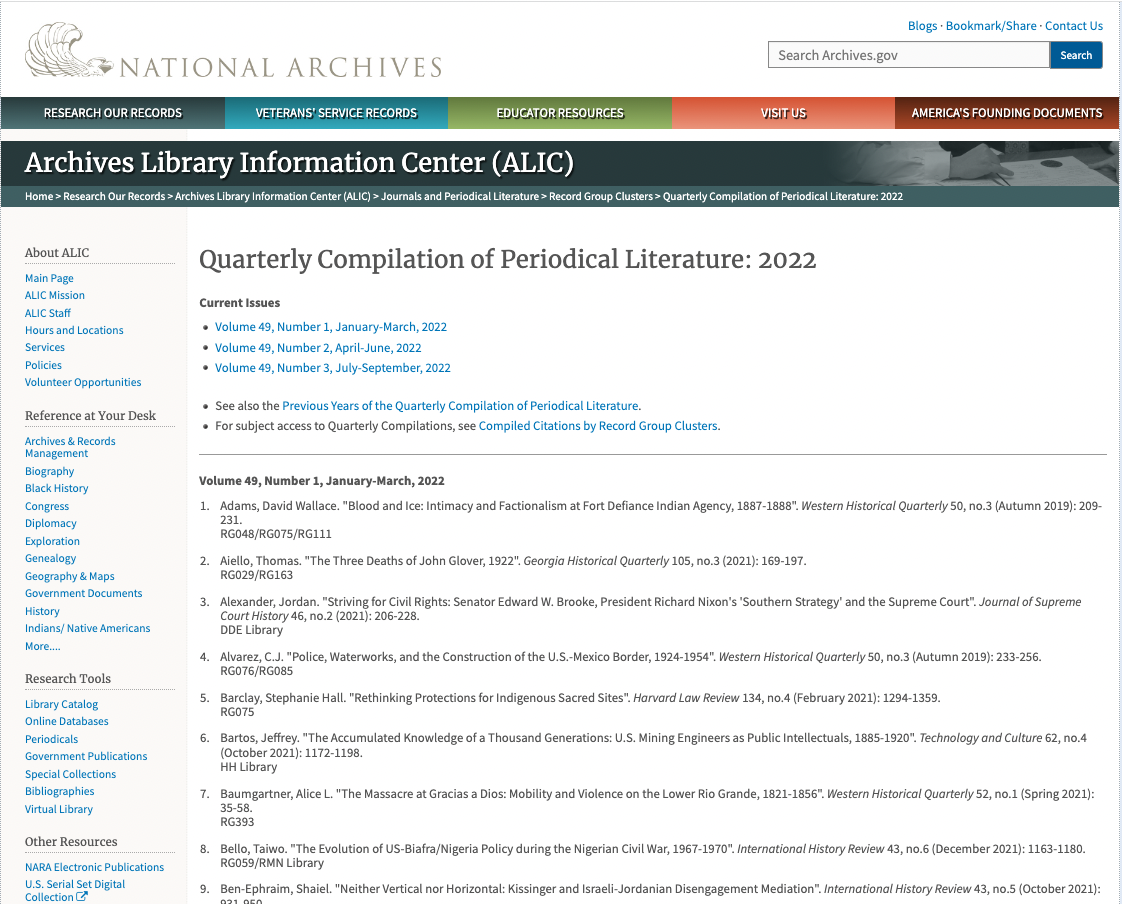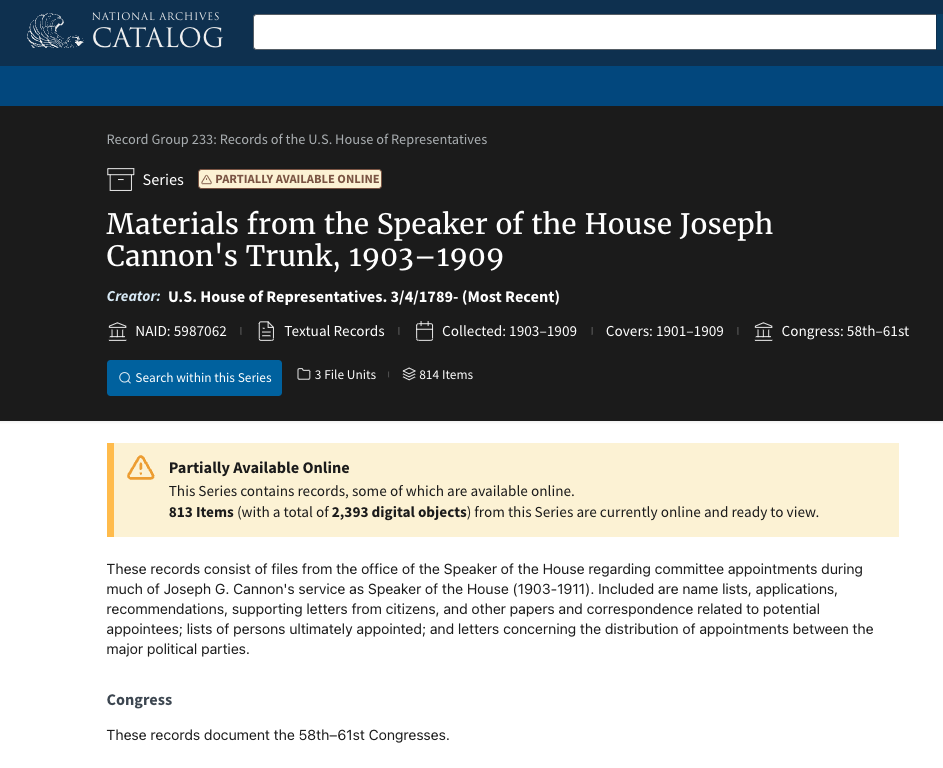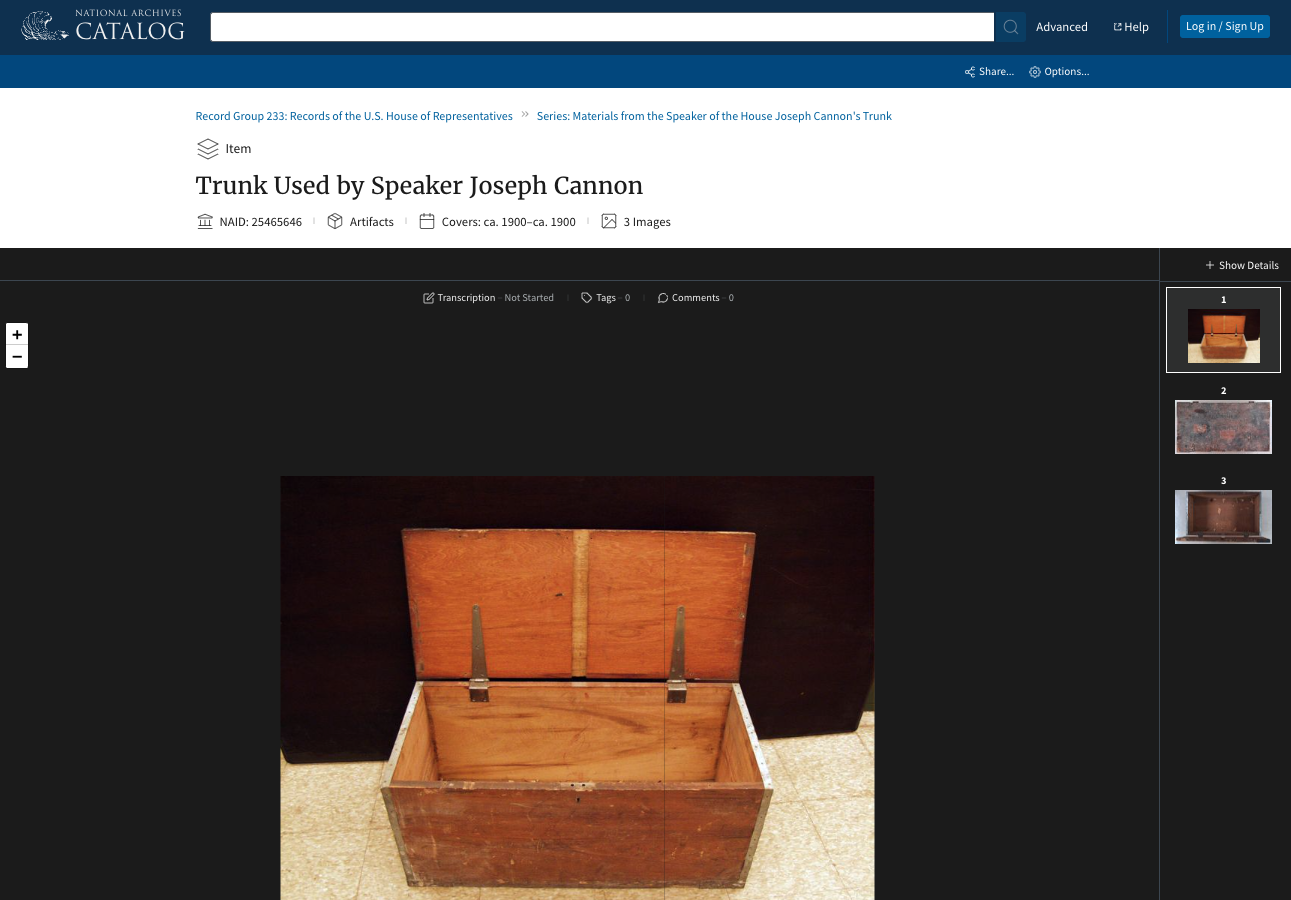OK, before I tell you what the gem is, I need to give you a little background.
Did you know that the National Archives includes a library within its walls? Yes, indeed: It’s the “Archives Library Information Center” which has the acronym of ALIC. It’s at the National Archives at College Park, Maryland (“Archives 2”), and is open to researchers as well as staff. ALIC’s collections focus on archival science and books and periodicals relating to the records in NARA’s custody.
Neither you or I have time to read all the historical periodicals currently being published for great articles about persons, places, things, or events pertinent to the lives of our ancestors. ALIC’s librarian does a little bit of that work for you, however, by compiling a Quarterly Compilation of Periodical Literature that focuses on identifying articles that cite records in NARA’s custody. That means footnotes that might lead you to more information!
The Quarterly Compilation of Periodical Literature: 2022 (https://www.archives.gov/research/alic/periodicals/nara-citations/2022) includes – for just the first three quarters of this year – 454 articles on a broad range of topics, such as:
- The dimensions of a Continental Army haversack like one your ancestor may have lugged around during the Revolutionary War.
- The forgotten black coal miners of southern Wyoming.
- Addiction to opium by Civil War veterans.
- Marine Corps justice during the Civil War.
- Federal compensation for property lost during the War of 1812.
- Sicilian immigration to Braxos County, Texas, 1871-1921.
Each entry in the Quarterly Compilation includes the author; article title; journal with volume, page numbers, and date of publication; and the NARA Record Groups (RGs) or presidential libraries cited by the author. One example would be: “Becker, Ann. “The Revolutionary War Pension Act of 1818.” Historical Journal of Massachusetts 47, no. 2 (Summer 2019): 98-137. RG015/RG046/RG233.”
The Quarterly Compilation dates all the way back to 2010. In addition to these annual lists, however, the ALIC librarian has also compiled the articles into lists by Presidential Library or Record Group cluster, such as Genealogical, Old Army, Old Navy, Maritime, and many others. These lists can help you hone in on specific topics of interest.
Now what? You’ve searched the lists and made note of some great-sounding articles. What then? The reference librarian and/or Inter-Library Loan (ILL) Librarian at your own public library should be able to help you locate online or obtain off-line copies of the articles. Still having trouble? Reach out to the ALIC librarian; there’s an email address on the main ALIC webpage.





